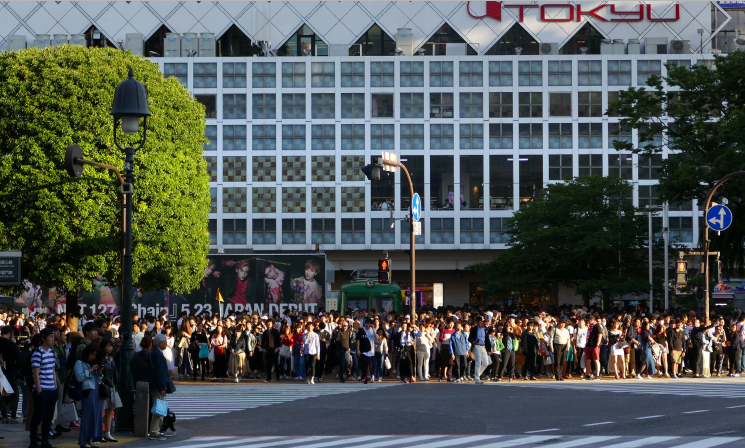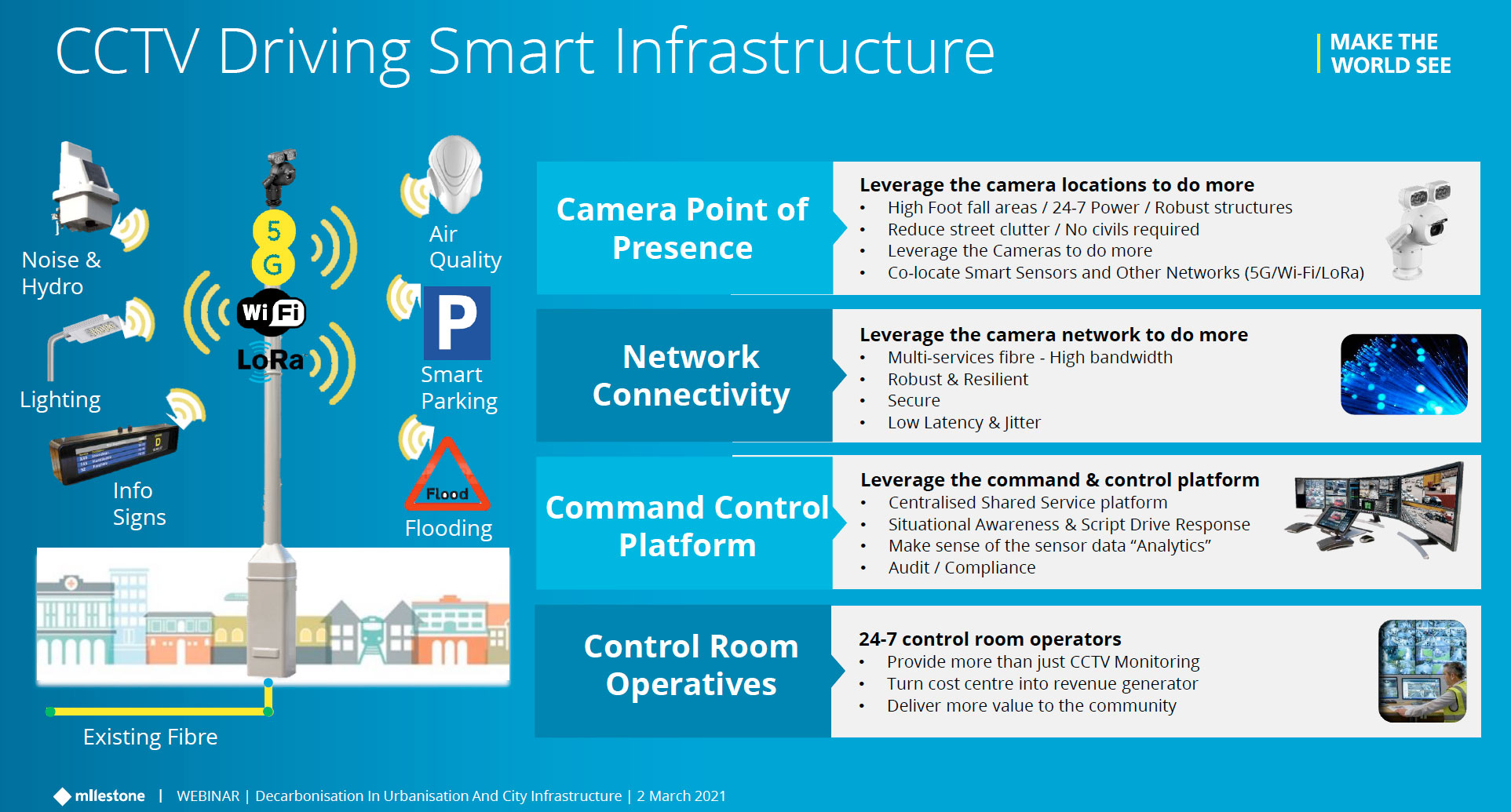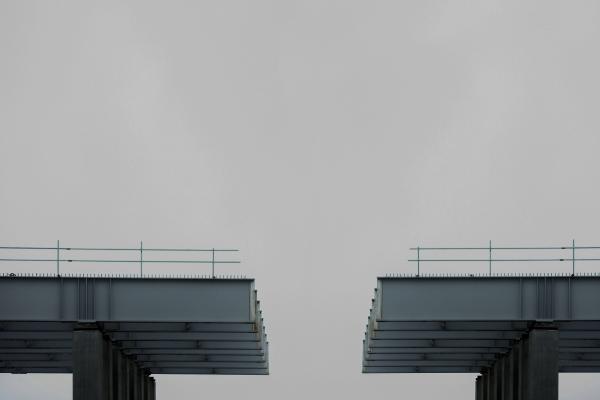The webinar series looks at how technology can be used in different sectors in the race to net-zero carbon. The webinars bring together experts from a specific sector to show how the latest technology can help with decarbonisation efforts in their areas. Resilience First will also be producing a paper detailing the findings at the end of the series.
With populations of cities across the globe increasing all the time, decarbonisation of urban environments needs to be a priority in order to achieve carbon-zero. Technology can play an important role in helping to reduce the carbon emissions in a variety of ways. This webinar looked at the decarbonisation issues faced by cities and how technology can help.
Technology and decarbonisation
Robert Hall, Executive Director of Resilience First gave a brief scene-setting welcome to the webinar and introduced the Chair, Ediz Altun IOT Partner Sales Manager, Video & Smart Cities at Intel. Ediz spoke about Intel’s goals in reducing carbon and documented the rise of data, which is key to a lot of urban decarbonisation technology, and how by 2025 the world will have produced 175 Zettabytes of data (a zettabyte is a trillion gigabytes). That amount of data requires an enormous amount of computing power, and as Intel provides this computing power at the core of a vast amount of technology, it is vital that their chips work as efficiently as possible to consume as little energy as possible.
Different cities need different solutions
Ben Smith, Director for Energy and Climate Change consulting at Arup, spoke about the issues around the decarbonisation of cities in his keynote talk. He started by highlighting the fact that every city is unique. Solutions for decarbonisation need to fit with the unique context
There are, however, global trends that can be identified. With over half of the world’s population now being classed as ‘middle-class’, their increasing wealth means they consume more and create greater greenhouse gas emissions. Cities around the world are acknowledging they need to reduce carbon emissions, and increase climate resilience. Some cities, like Houston and Cape Town, have been in the news in the last few years due to issues caused by climate change, but they’re not alone. Over 1,000 jurisdictions around the world have now declared a climate emergency and are implementing aggressive targets for carbon reduction.

Caption: By 2050 it’s estimated that 75% of the world’s population will be living in cities
To achieve these targets cities are creating climate action plans, but importantly these have to be tailored to each city and bring up issues of equity and fairness. The city of Amsterdam is beginning to address consumption emissions (from travel, diet, clothing and electronics). However, most urban dwellers in the world have never been on an aeroplane, and many are under-nourished.
How cities create carbon emissions and how tech can help reduce them
Buildings are the biggest cause of emissions in cities and also often present the biggest opportunity for decarbonisation. Municipal authorities can lead the way in this area by championing alternative heating methods and power generation. Technology can help with this by the use of tech around imaging, drones and heat maps to help with retro-fitting buildings. Building management and controllable appliance technology can help with reducing day-to-day energy consumption. Technology is also reducing carbon emissions in construction by decarbonising the production of materials and making techniques like modular construction more feasible. Lastly, technology can help us monitor carbon emissions and address any ‘performance gaps’ once buildings are up.
Technology can also help with the decarbonisation of urban transport networks. Data from journey planning phone apps is a powerful tool in predicting peaks and troughs in transport systems allowing them to be run as efficiently as possible.
Even with stringent decarbonisation measures there will be residual carbon emissions and carbon capture technology, and nature-based solutions will be needed to address this. In fact, a lot of decarbonisation interventions have benefits for cities beyond the reduction of carbon emissions. These co-benefits can come in the form or better health outcomes, training and jobs and better connection to the natural environment.
The Smart City and decarbonisation
Nigel Steyn, Sales CTO for Global Safety & Security | Computer Visionat at Dell Technologies, started his section by defining the concept of a ‘smart city’. A smart city is an ‘Integrated set of systems and services in which human capital interacts by using technologically based solutions.’ Smart Cities can be broken up in to domains, such as transport, health, energy, economy. Often a problem that originates in one domain, causes issues in other domains, and the way to tackle that is through technology.
Analysing diverse data sources
There are two different types of data – structure and unstructured data. Structured data comes from sensors that can measure physical properties and turn measurements in to machine readable values. Unstructured data comes from devices like video cameras that require interpretation. Dell Technologies’ technology provides the means of bringing these data sources together and put them to use.

Caption: Drilling down to data coming from temperature sensors in a building
Soraya Heristchian, Technology Partner Alliance Manager for Northern Europe, Milestone Systems, expanded on the theme of bringing together diverse data sources. Soraya spoke about the Xprotect open platform that allows diverse technology systems to connect. This can help with decarbonisation by allowing city infrastructure to connect with business infrastructures thus enabling the ‘smart city’.
Combined data in action
An example of this technology in action is turning an existing CCTV camera in to a data-hub. The hub uses wifi and 5G to receive data from air-quality, noise, precipitation sensors, whilst also sending data to information signs and a central control room. The central control room receives combined data meaning operatives can analyse a range of data. For example, CCTV images can be used to understand why the air-quality sensor is picking up poor air quality.

Caption: Using a CCTV camera as a data hub
Using AI in video analytics
Ariel Frischoff, VP sale EMEA & EPAC for Agent VI, focused on the role of video analytics in decarbonisation. Agent VI’s video analytics can help implement traffic management, smart buildings and waste management. The technology enables existing cameras to be used to provide more powerful data.
Video of traffic can be analysed and classified by vehicle type and speed to aid transport planning. The technology can be used in building management to analyse video data to show which areas are being used or issues such as lighting has been left on. Waste management can also be enhanced by monitoring rubbish build-up and illegal dumping of waste.

Caption: Analysing traffic video by vehicle type and speed
Stopping technology adding to carbon emissions
A large amount of computing power has the potential to use a lot of energy, in turn producing further carbon emissions. Agent VI’s technology is optimised to be highly energy efficient so the decarbonisation solution doesn’t add to the problem.
Questions – what about data privacy? Cost effectiveness? Electrical vehicles? Planning?
The panel answered questions from the viewers. The first was on GDPR and data privacy. Nigel Steyn emphasised that this is an important question as regulations are rightly very strict, and the security of the data and how it will be used are two separate things. He also saw traceability within the technology as very important. Ariel highlighted the importance of storing the data locally and individuals not being identifiable.
The panel were then asked about the cost effectiveness of building new buildings, as opposed to retrofitting old ones. Ben said that often there are so many issues retrofitting old buildings that it can be more cost effective to build new, although it obviously varies depending on the situation.
The next question was on electrical vehicles and fast charging in developing cities. Ben had heard that fast charging on the edge of cities was inefficient as people had to drive the cars back out of the cities to charge them back up. It would be better to have trickle charge on the streets and where the cars are stored.
Finally, the panel were asked if the tech solutions were developed with planning regulations in mind. Ben thought it wasn’t that much of an issue as the technologies often overlay on to existing structures, although there may be exceptions.

Caption: Webinar participants (clockwise from left): Ben Smith (Arup), Ediz Altun (Intel), Soraya Heristchian (Milestone Systems), Ariel Frischoff (Agent VI), Robert Hall (Resilience First), Nigel Steyn (Dell Technologies)
The full on-demand recording of the video can be viewed here.
Further webinars from Resilience First, in partnership with Intel
The Decarbonisation and the Role of Technology webinar series continues next Tuesday, 9 March 2021 when the focus will be on decarbonisation in rail. After that the final webinars will be on manufacturing, and aviation and aerospace. For more details and how to sign-up to these free events please see our Decarbonisation and the Role of Technology homepage


